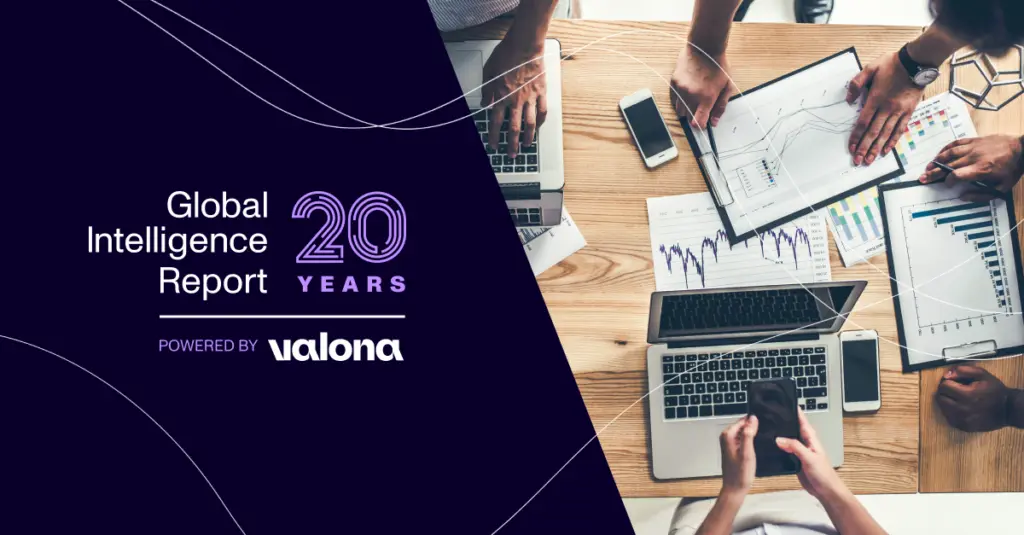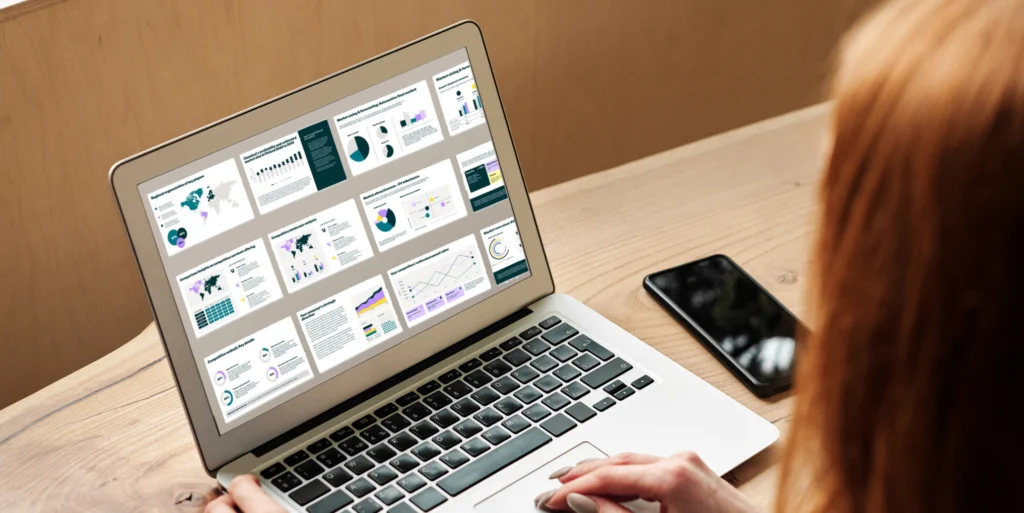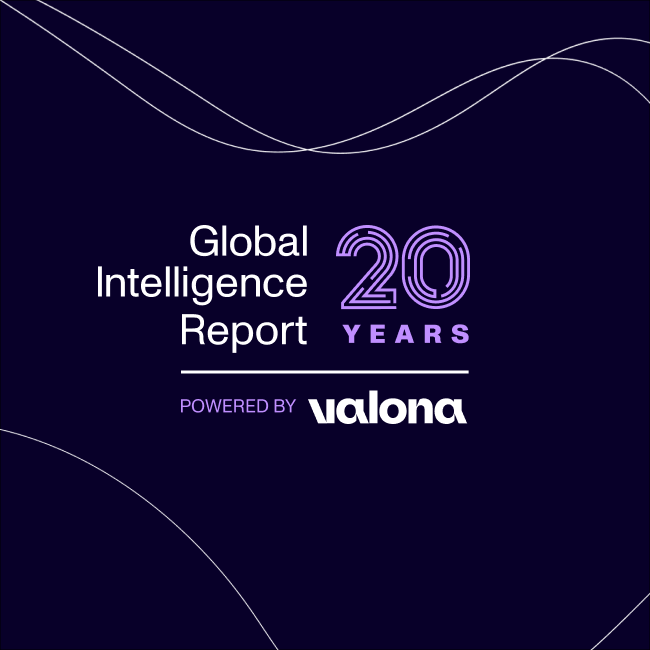
Futures thinking explained: Concepts and practical applications
Learn how futures thinking helps organizations anticipate change, explore possibilities, and create resilient strategies. Discover tools and techniques to stay proactive and thrive.
Futures thinking helps you prepare for what’s ahead by exploring possibilities and planning for them. It’s all about being proactive and ready for whatever comes your way. But figuring out how to use futures thinking effectively can feel like a big challenge.
Whether you’re spotting trends, creating scenarios, or using tools to predict outcomes, understanding the basics is the first step.
This article breaks down futures thinking into simple, practical steps:
- Scanning for trends and weak signals
- Exploring multiple scenarios
- Mapping systems and interconnections
- Engaging diverse perspectives
- Using data and technology for insights
- Embedding futures thinking into strategy
What is futures thinking?
Futures thinking is a way to explore and prepare for what might happen next. Instead of focusing only on short-term goals, it takes a broader view, imagining different possibilities and planning for them.
This approach helps individuals and organizations stay ready for change and seize opportunities as they arise.
“Futures thinking isn’t about predicting the future—it’s about exploring what’s possible and making smarter decisions today.”
Unlike traditional planning, which often assumes a straight path forward, futures thinking considers multiple possibilities. This mindset encourages flexibility and adaptability, enabling you to adjust your strategies as circumstances evolve.
For example, a company might use futures thinking to explore how new technologies or shifting social norms could reshape their industry. Instead of guessing what will happen, they imagine various scenarios and prepare for them, building resilience and readiness.
Why is futures thinking important?
Whether it’s shifting Anticipating uncertainty helps organizations stay prepared for change rather than being caught off guard. By identifying shifts in technology, market trends, or customer preferences early, businesses can develop proactive strategies.
For example, spotting an increase in demand for eco-friendly products could inspire a company to launch sustainable alternatives, staying relevant in a competitive market.
Driving innovation happens naturally when you consider multiple possibilities and explore creative solutions. Futures thinking encourages teams to think beyond immediate challenges, sparking breakthrough ideas.
For instance, analyzing how automation might reshape customer service can lead to developing new tools or approaches that enhance user experience and efficiency.
Strengthening strategic decision-making allows leaders to align actions with long-term goals and potential outcomes. This approach ensures resources are allocated effectively and risks are minimized.
For example, integrating strategic foresight into planning could guide investment in renewable energy, positioning a business for sustainable growth as environmental priorities rise globally.
“Futures thinking turns uncertainty into an opportunity to innovate, plan strategically, and adapt with confidence.”
Building resilience creates organizations that thrive in uncertainty. Futures thinking equips teams to anticipate disruptions like economic downturns or supply chain bottlenecks and respond confidently.
For example, a company that prepares for remote work trends can quickly adapt its operations, ensuring stability and maintaining productivity in changing conditions.
Futures thinking turns uncertainty into opportunities for growth, innovation, and resilience. Ready to apply these insights to your organization? Discover how Valona Intelligence’s Futures Thinking feature can help you anticipate trends, plan strategically, and stay ahead of the curve.
How to apply futures thinking in practice
1: Scanning for trends and weak signals
Scanning for trends means actively monitoring changes that could influence the future, while weak signals—small but recurring indicators—often point to emerging trends. For instance, early discussions around remote work started as a weak signal but have since become a global workplace standard.
Ways to effectively scan for trends and signals:
- Leverage industry reports and research: Access in-depth analyses from trusted sources like McKinsey or Gartner. Regularly review market studies, white papers, and news to track advancements in technology, shifting consumer behavior, and environmental changes.
- Spot weak signals: Pay attention to recurring patterns, such as niche product launches or emerging consumer interests. These often hint at larger trends waiting to unfold. For example, early adoption of electric vehicles signaled a major transformation in the auto industry.
- Use analytical tools: Platforms like Brandwatch, Google Trends, or Hootsuite can help you monitor online conversations and news trends. These tools identify buzzworthy topics, public sentiment, and potential market shifts in real-time.
- Attend events and read publications: Industry conferences, webinars, and trade journals are excellent for discovering early signals and trends. These forums provide valuable insights from experts and peers.
By scanning for trends and weak signals, you can anticipate change, refine your strategies, and position your organization for future success.
2: Exploring multiple scenarios
Scenario planning allows you to prepare for a variety of potential futures by imagining “what if” situations. Instead of relying on predictions, it explores a range of possibilities to uncover opportunities and mitigate risks.
For example, a retail company could analyze scenarios like a rapid shift to e-commerce, supply chain disruptions, or growing demand for sustainable products.
Steps to create actionable scenarios:
- Develop diverse futures: Create multiple scenarios such as best-case, worst-case, and moderate outcomes. Use industry and market data to ensure these possibilities are grounded in reality but diverse enough to test your strategies against different challenges.
- Test your strategies: Analyze how your current plans would perform in each scenario. Identify weak points, potential risks, or opportunities for improvement to refine your approach.
- Involve stakeholders: Bring in cross-functional teams to discuss how each scenario might impact their areas. This collaboration ensures that strategies are holistic and address varied perspectives across the organization.
- Use visualization tools: Scenario mapping software or even simple flowcharts can help outline potential outcomes and their ripple effects.
By exploring multiple scenarios, you build a robust framework for decision-making. This method enhances your organization’s ability to adapt and thrive, no matter what the future holds.
3: Mapping systems and interconnections
Understanding how trends interact is a key part of futures thinking, as no change happens in isolation. Systems mapping helps visualize these connections, showing how one shift can trigger others.
For example, mapping how electric vehicle adoption influences energy demand and urban planning can uncover innovation opportunities and hidden risks.
Practical ways to map systems:
- Create systems diagrams: Use tools like flowcharts or specialized mapping software to connect trends and drivers. These visualizations make it easier to see relationships and identify potential cascading effects.
- Identify leverage points: Pinpoint areas where a small change—like a policy update or technological breakthrough—could lead to significant shifts across the system.
- Consider unintended consequences: Analyze how your actions might have unexpected ripple effects. For instance, promoting electric vehicles might strain energy grids, requiring additional infrastructure planning.
- Explore interdependencies: Look at how trends in one area, such as technology, might influence others like consumer behavior, regulatory frameworks, or economic growth.
Systems mapping offers a holistic view of the forces at play, helping you anticipate challenges, seize opportunities, and craft strategies that address the broader landscape.
4: Engaging diverse perspectives
Bringing in diverse perspectives enhances futures thinking by uncovering blind spots and sparking creativity. Collaboration ensures that ideas come from a variety of angles, leading to well-rounded strategies and innovative solutions.
For example, combining insights from your technology team with customer service input can result in forward-thinking, user-centered innovations.
How to bring in diverse viewpoints:
- Host cross-functional workshops: Gather insights from different departments, like marketing, R&D, and operations, to ensure all parts of the organization contribute. Each team brings unique knowledge and experiences to the table.
- Include external voices: Invite customers, industry experts, or community members to share their perspectives. Fresh, outside input can reveal gaps or opportunities you may not have considered.
- Encourage brainstorming: Foster an open, judgment-free space for participants to share ideas, no matter how unconventional they may seem. Unfiltered creativity often leads to the best solutions.
- Use collaborative tools: Platforms like Miro or Zoom can facilitate effective virtual brainstorming sessions, especially for dispersed teams or external contributors.
Engaging diverse perspectives ensures your strategies are comprehensive, inclusive, and forward-thinking, helping you prepare for the future with a richer understanding of potential outcomes.
5: Using data and technology for insights
Making use of data and advanced tools transforms futures thinking by turning complex patterns into actionable strategies.
Predictive analytics, simulations, and trend analysis provide clarity, helping you anticipate and navigate potential challenges or opportunities. For example, AI-driven tools can uncover untapped product opportunities in emerging markets, giving businesses a competitive edge.
How to make the most of technology:
- Use predictive models: Analyze past data to forecast customer behavior, market trends, or operational needs. These models provide evidence-based insights, reducing guesswork and enabling smarter decision-making.
- Simulate scenarios: Tools like AnyLogic allow you to test strategies under varying conditions, such as supply chain disruptions or shifts in demand. By exploring these possibilities, you can prepare contingency plans and improve overall resilience.
- Integrate AI tools: Platforms like Tableau or IBM Watson help identify patterns and trends that might go unnoticed with manual analysis. These technologies streamline complex datasets, making it easier to prioritize strategic initiatives.
- Adopt real-time analytics: Tools that monitor live data ensure your strategies stay relevant, allowing you to pivot quickly if market conditions change unexpectedly.
By incorporating data-driven tools into your approach, you can turn insights into impactful actions, keeping your organization agile and ready to adapt in an ever-evolving environment.
6: Embedding futures thinking into strategy
Futures thinking works best when it’s part of everyday decision-making, not just an annual planning exercise. By regularly integrating foresight practices, your organization can stay proactive, agile, and prepared for unexpected changes.
This approach ensures that your strategies evolve with emerging trends and challenges, keeping you one step ahead.
Steps to embed futures thinking:
- Incorporate into planning: Include foresight insights in strategy sessions, quarterly reviews, and product development meetings. This ensures every decision reflects a forward-looking mindset.
- Align with KPIs: Create measurable goals tied to future preparedness, such as responsiveness to market shifts or readiness for new technologies.
- Create foresight roles: Assign dedicated teams or leaders to champion futures thinking initiatives. These roles keep foresight activities organized and impactful across all departments.
- Leverage foresight dashboards: Use tools like Trello or Notion to track industry trends and scenarios in real time, enabling continuous refinement of strategies.
For example, a business using foresight dashboards to monitor shifts in consumer behavior can quickly adjust its offerings, ensuring relevance in changing markets. Embedding futures thinking into your processes transforms foresight from a one-time activity into a dynamic part of your organization’s DNA.
Shaping the future with futures thinking
Futures thinking is a powerful way to navigate change and uncover new growth opportunities. By using techniques like trend scanning, scenario planning, and systems mapping, you can anticipate challenges and develop resilient strategies.
Instead of reacting to surprises, futures thinking helps you explore possibilities and stay ahead in dynamic environments.
Start small but think big. Identifying trends or running a brainstorming session can kickstart your journey. Embedding futures thinking into your planning process empowers you to adapt, innovate, and thrive. It ensures your organization stays proactive, relevant, and ready for anything the future holds.
But where do you start?
Valona’s on-demand webinar, Master Competition with Strategic Foresight, dives deep into practical techniques to apply futures thinking in your strategic processes. From identifying key trends to building actionable scenarios, the webinar offers expert insights to help you stay ahead of the curve.
Ready to turn foresight into your competitive advantage? Take the first step toward mastering the future.
FAQ
What is futures thinking?
Futures thinking is a forward-looking approach that explores different possibilities to prepare for change. Unlike traditional planning, it considers multiple scenarios, trends, and potential challenges to help individuals and organizations adapt proactively. By imagining various outcomes, futures thinking allows you to make smarter decisions today while staying prepared for whatever the future brings.
How is futures thinking different from traditional planning?
Traditional planning often focuses on immediate goals and assumes linear progress. Futures thinking, on the other hand, explores a wide range of possibilities and considers uncertainties. It emphasizes flexibility, scenario planning, and trend analysis to prepare for multiple outcomes. This proactive approach ensures organizations can adapt and thrive in dynamic, unpredictable environments.
Why is futures thinking important for businesses?
Futures thinking helps businesses anticipate change, innovate, and build resilience. By identifying trends and exploring scenarios, organizations can proactively address challenges and seize new opportunities. This approach enables better decision-making, fosters long-term growth, and ensures businesses remain competitive in fast-changing markets. It transforms uncertainty into a strategic advantage.
How can organizations start using futures thinking?
Organizations can begin by scanning for trends, mapping systems, and engaging diverse perspectives. Hosting scenario-planning workshops and integrating predictive analytics tools are effective first steps. Gradually embedding futures thinking into regular strategy sessions ensures it becomes part of everyday decision-making, helping teams stay proactive and prepared for change.
What tools can support futures thinking?
Tools like Tableau and IBM Watson can analyze trends and uncover patterns, while simulation platforms like AnyLogic test strategies under different scenarios. Predictive analytics helps forecast outcomes, and foresight dashboards like Trello track real-time insights. These tools make futures thinking actionable, enabling organizations to turn data into impactful strategies.




